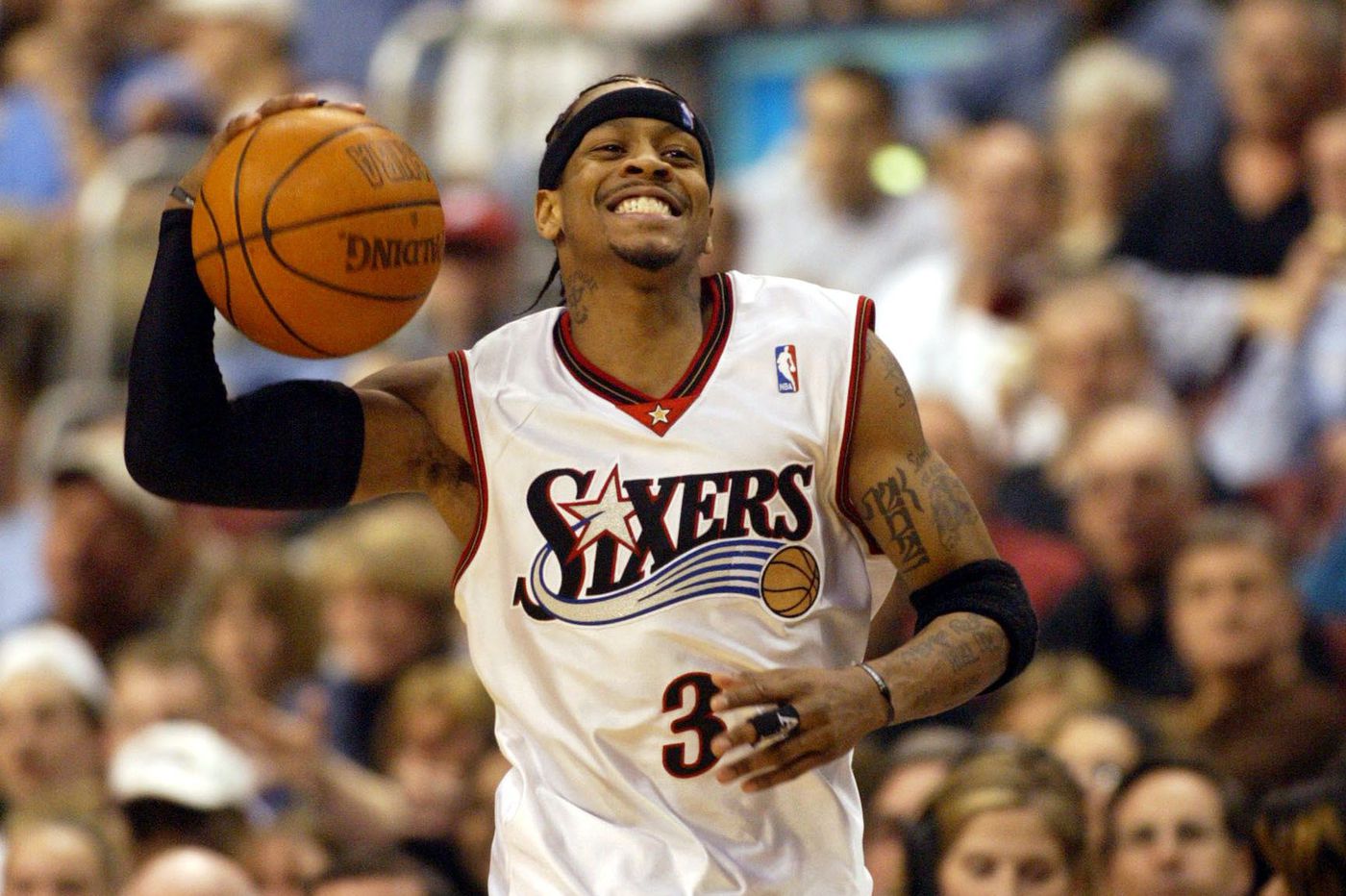Means to an End or a Trend?: Compression Sleeves in the NBA
Means to an End or a Trend?: Compression Sleeves in the NBA
-Dave McNamara
If you’ve watched professional sports for a while, you may have noticed that styles of uniform and what athletes are wearing change. In basketball, the short shorts of the 70s, 80s and early 90s have been replaced with long flowing mesh, and even, on certain nights, v-neck t-shirts, instead of the usual jerseys. But what’s become even more striking is the fashion of...compression wear.
Iverson and the Sleeve
In the NBA, the popularity of “the sleeve” can be attributed to one of the league’s most mercurial and exciting players: Allen Iverson.

With a professional career that spanned from 1996-2011, this 11-time all-star guard at first wore a compression sleeve to help with elbow bursitis. Bursitis is a condition when fluid builds up in the elbow, causing pain, burning, and swelling. But then Iverson started wearing it regularly. In 2001 he was the league’s scoring leader and MVP. And then all of a sudden, compression sleeves started popping up on multiple teams. Iverson was an exciting player to watch. Reputedly 6’0”, this little point guard had one of the most creative and explosive games in NBA history, especially his nasty cross-over. Notoriously superstitious, it’s no wonder other players sought an edge. Sure, there was still the “Like Mike” chant for Michael Jordan, but now it was “Like...Al”? Anyway, he was the man.
The Style of Rehab
Compression sleeves are widely known to help aid recovery after orthopedic surgery—they reduce swelling, stimulate blood flow to affected areas, and limit pain—but why had professional athletes, Olympians, and college players started wearing the sleeve as sports fashion? Is there an actual performance benefit for stars like Lebron James or James Harden to wear sleeves during play?
They Know More Than You Think They Do
Actually, it turns out the athletes are indeed onto something. While not doctors, elite athletes trained at extremely high levels certainly know how their body works.
Medically speaking, the effects of wearing sleeves for an athlete include the following:
- Counteracting Fatigue: Several researchers, including a team lead by Dr. Thibaud Thedon, found that wearing a sleeve during periods of arm muscle use reduces levels of fatigue, increasing the bound area’s oxygenation. It was admitted, however, that further studies need to be done to fully confirm this.
- Better Blood Flow: There’s also growing consensus that sleeves help blood circulation. This allows the muscles to get the nutrients they need during prolonged periods of activity. According to Researchers Coza, MD; Dunn, MD, Anderson, MD, and Nigg, MD in The Journal of Strength and Conditioning Research, compression “may enhance performance especially in sports that require repeated short bouts of exercise.”
- Faster Recovery: Growing evidence also suggests wearing compression sleeves during play will aid the speed of recovery after play. This is the case since the external pressure helps both blood and oxygen move more rapidly to areas of the body that need them the most during game time. Blood and oxygen produce less lactic acid—the cause for soreness—so muscles may remain “warm” even after a period of rest. NBA players play a grueling 82-game regular season. And with the possibility of a playoff run, recovery is an essential component to the team’s success.
Conclusion
Clearly, compression sleeves offer players a number of medical benefits on the court and off. But it’s strange what becomes fashionable. For athletes, it could add a psychological advantage in a game whose rhythm and streaks constantly change. So if you’re looking to make a statement on the basketball court, try sliding on some compression sleeves.
Once we start seeing them come down the runway during Fashion Week, on the other hand: well...maybe the “med” trend has gone a bit too far.
References
- Branch, John. ‘For College Basketball Players, Skin Is No Longer in’. College Basketball (The New York Times), April 3, 2015. http://www.nytimes.com/2015/03/22/sports/ncaabasketball/for-college-basketball-players-skin-is-no-longer-in.html.
- Miller, Stuart. ‘The Sleeve Settles’. The New York Times N.B.A. Blog, May 2013. http://offthedribble.blogs.nytimes.com/2013/05/09/the-sleeve-settles-in/.
- Sofge, Erik. ‘The Compression Clothing Craze’. Accessed December 7, 2016. http://www.mensjournal.com/gear/sports/the-compression-sportswear-craze-20131108.
- Thedon, Thibaud, Nicolas Belluye, and Stéphane Perrey. ‘Compression Sleeves Significantly Counteracts Muscular Fatigue during Strenuous Arm Exercise (P124)’. InThe Engineering of Sport 7, 641–48. n.p.: Springer Nature, n.d.
- Coza, A, JF Dunn, B Anderson, and BM Nigg. ‘Effects of Compression on Muscle Tissue Oxygenation at the Onset of Exercise’. Journal of strength and conditioning research. 26, no. 6 (April 3, 2012): 1631–37. Accessed December 7, 2016. https://www.ncbi.nlm.nih.gov/pubmed/22465988.
